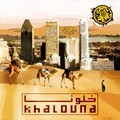50 years ago, a Norwegian adventurer took interest in the way our ancestors sailed. Thor Heyerdahl, who was also an ethnographer with a background in zoology, botany and geology, believed that prehistoric civilizations on both sides of the Atlantic «have been in contact with each other by means of reed boats».
He was convinced that these papyrus boats, inherited from ancient Egyptians, were behind this connection. To prove his hypothesis, the adventurer needed to go on a real adventure. In 1969, he started the first phase of the journey, turning to Morocco’s shores.
Heyerdahl thought of an expedition. One that he led, linking Morocco to the other bank of the Atlantic Ocean. The adventure, dubbed the Ra expedition, in reference of the ancient Egyptian sun god Ra, was set out to «test the feasibility of the theory», Michael Allaby and Richard Garrat wrote in their book «Exploration : New Lands, New Worlds» (Infobase publishing, 2010).

And so it was. On May 25, 1969, the reed boat sailed from Safi after it was transported to Morocco. According to Kon-Tiki Museum, the Ra expedition boat «was constructed of local papyrus reed in front of the Great Pyramid of Giza in Egypt».
«It had a single, inverted V-shaped mast with a single square sail, and a steering oar on the port quarter. The prow and stern curved upward, rising high from the water, and there was a cabin toward the stern».
The boat sailed for 5,000 kilometers in eight weeks, but failed to fulfill its mission. The construction of the boat was deemed «inadequate» and it had a broken helm. «Heyerdahl feared that the Ra would sink with its entire crew on board», explained the museum, «he therefore aborted the expedition, just a week shy of reaching their destination, Barbados», it added.
The Ra II and Madani Ait Ouhani
The adventurer did not lose hope and planed a second phase of the expedition. This time, the latter was called Ra II and its crew included a Moroccan man. Heyerdahl started from the construction of the boat.
He commissioned a team from the Aymara people, indigenous nation in the Andes and Altiplano regions of South America, to build the new boat. Ten months later, the Norwegian adventurer brought back his team, adding a new member : Madani Ait Ouhani.

«I was the manager of the Atlantic Hotel in Safi», said Ait Ouahani in a 2014 interview. «Fortunately, they were accommodated in this hotel and I had known them during the first expedition», he recalled, referring to how he got to be part of the crew.
«At the last moment, a Chadian who was part of the crew had to leave for family reasons and the Norwegian had to look for a replacement», Ait Ouhani explained.
«He came to me and asked if I wanted to go with them. I said to myself, Morocco should take part to this kind of expeditions. So I accepted and I became the 8th member of the crew».
On a Sunday morning, on May 17, 1970 at 8:20 am, the expedition was launched from the port of Safi for the second time. «70% of the inhabitants of Safi had come to the port and fishing boats were prepared to accompany us to the sea», the Moroccan recalled.
«The trip was like the old way», he reminisced. Indeed, Ra II arrived in Barbados on July 12, crossing 6,100 kilometers in 57 days. The successful trip hence disproved «the longstanding dogma that there could not have been any contact between the Mediterranean region and South or Central America prior to Columbus’ discovery».
During the trip, the crew noticed that the Atlantic Ocean was polluted. Madani Ait Ouhani collected samples of the oil clots floating all over the Atlantic, which helped the Norwegian to write a report on the situation.

Once in Barbados, the team was welcomed by the explorer’s wife and daughter, said Ait Ouhani. «We then went to New York which organized a lunch in our honor», he said.
When he returned to Morocco Ouhani was received by King Hassan II, who decorated him with a Wissam. He was later also decorated by Egyptian president Jamal Abdel Nasser.
Meanwhile, the Norwegian adventurer wrote a book about his trip and made a documentary that was nominated to the Academy Awards, commonly known as the Oscars. The ship used for the Ra II expedition is currently setting at the Kon-Tiki Museum in Oslo, Norway.





 chargement...
chargement...













